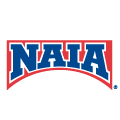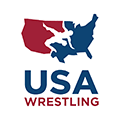Keeping track of your recruiting process just got a lot easier with NCSA Progress Cards

The recruiting process is full of moving parts. From researching schools to connecting with coaches to planning college visits, it’s easy to get overwhelmed and lose track of your to-do list. That’s why we’ve added a new “Progress” tab to the NCSA network. When you click on a particular college, you’ll see a checklist that visually breaks down each task you need to accomplish in order to build a relationship with that coach.
As your family navigates the recruiting process and searches for the right athletic and academic fit, NCSA’s Progress tab will help you stay on top of your tasks, forge stronger connections and efficiently manage your time. Here are the sixteen progress cards you can complete now on your NCSA profile.
Research and Decide: The first step of your recruiting journey is to research the school and program to determine whether it’s a good fit. Make sure to check out the roster to learn more about the team’s athletic and academic requirements. Is it a good fit? Add to your list of Favorites!
Complete the Questionnaire: Most programs have online questionnaires to collect key information about recruits. These questionnaires are sent to the college coach, allowing them to quickly and easily build a database of recruits. Before you reach out to a school, make sure to fill out their questionnaire.
Follow a Coach on Social Media: Most college coaches have at least one social media account—most often Twitter—where they post updates about the season as well as insights on the guidelines and intangibles they look for from recruits. In addition, Direct Messaging coaches on Twitter gives you an invaluable direct line of communication. It’s always a great sign when a coach follows you back!
Send an Initial Email: Once you’ve filled out the recruiting questionnaire and connected with a coach on social media, it’s time to send your introductory email. Don’t forget to personalize your email, include key information, and tailor your subject line to the program.
Video Evaluation: Your highlight video can be an effective tool for getting recruited by coaches who can’t see you compete in person. Keep the video short and sweet and frontload it with your best plays. Send over recent footage to pique a coach’s interest and get on their radar.
Digital Conversation: Continue to touch base with a coach via email, text and social DMs. This Progress Card makes it easy to keep track of emails, texts, or social media DM’s you’ve sent to college coaches—and which coaches replied!
Live Evaluation: Many college coaches wait to offer recruits a scholarship until they’ve evaluated them in person. Invite coaches to any upcoming games, tournaments, camps or showcases and register for events at colleges on your target list. Be sure to chat with the coach at the event and get their feedback on things to improve.
Phone Conversation: College coaches get hundreds of texts and emails every day. For this reason, a good old fashioned phone call can help you make a memorable impression. Don’t panic if you don’t get an answer. Be sure to leave a voicemail to stay in touch.
Off-Campus Contact: College coaches don’t just ask recruits to come to their campus—they may initiate contact with you off-campus as well. During contact periods, coaches will often visit recruits at their high school, set up informal home visits and/or check in during a camp or tournament. Keep in mind that the extent of a college coach’s off-campus contact largely depends on the size of the program’s budget.
Unofficial Visit: Unofficial visits are unlimited and can be taken at any age and at most times throughout the year. They are a great way to get a feel for a college campus and learn more about a school’s academic and athletic programs. Don’t forget to follow up with the coach after your visit.
Official Visit: A visit to a college campus in which any part is financed by the school is considered an official visit. Coaches usually save invitations for their top recruits—getting asked is a huge step on your recruiting journey. While official visits to D2 and D3 schools are unlimited, the NCAA allows recruits to only make five official visits to D1 schools.
Offer: Receiving an offer from a school you’re interested in is a huge accomplishment. Before making your decision, confirm whether you’re making a verbal commitment or if a coach wants you to commit during an official signing period.
Apply for Admission: Don’t miss your deadlines! Make sure you’re keeping track of schools you’ve applied to already—and when—and which applications you’re still working on.
Negotiate Final Offer: While the majority of athletic scholarship offers are partial, negotiating can help you secure a larger scholarship. Ask about academic scholarships and see if higher test scores can give you access to more aid. Be sure to ask if your financial aid package will remain the same for all four years. Got multiple offers? Consider leveraging offers from competing schools to get more money.
Sign the NLI: Once you’re done negotiating, it’s time to sign the National Letter of Intent (NLI). This means that you’ve committed to a university for one year and no other schools can recruit you. Keep in mind that the NLI isn’t mandatory to sign and is used by around 650 D1 and D2 schools—many D3, NAIA and Junior College schools have their own version of the letter.
Commit: Have you made your college decision? Congrats! Before you complete your recruiting process, let college coaches know that you are no longer looking for offers. We’ll display your commitment status and school choice on your profile.
















